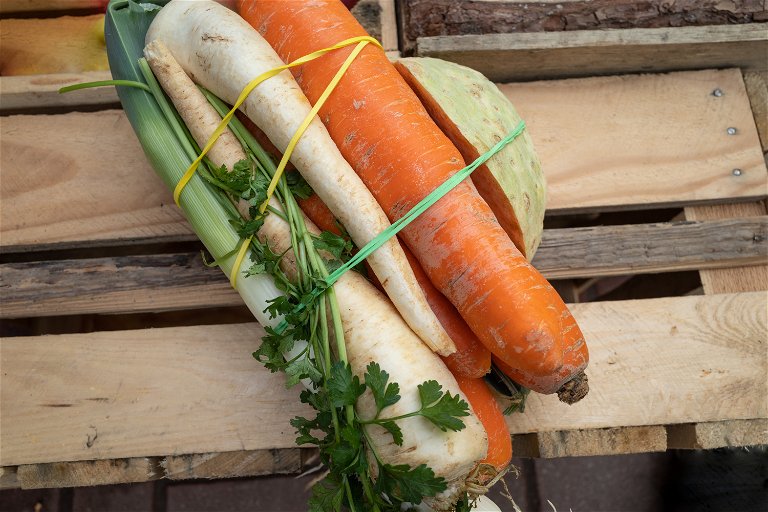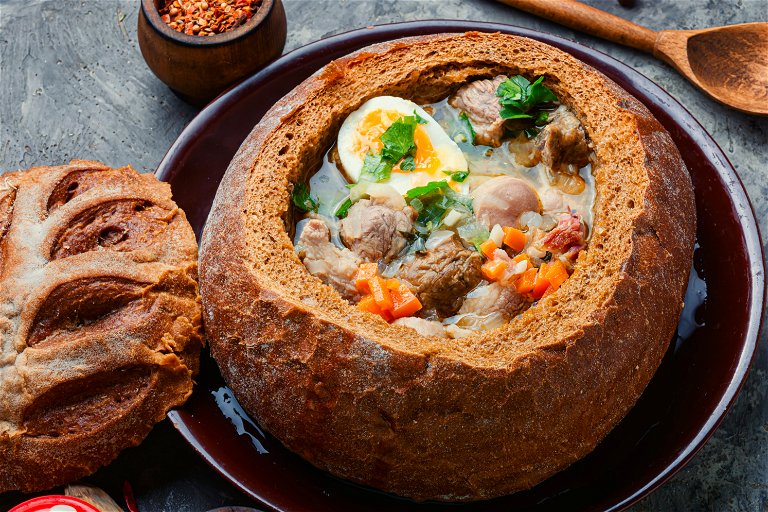Guide to Polish Cuisine
Polish cuisine is quite unique and memorable, and it is currently experiencing a full renaissance.
Poles are rediscovering forgotten ingredients and embracing their national identity through food. Tourists are now visiting Poland in search of new culinary discoveries, with chefs from the country’s finest restaurants delving into unusual ancient recipes and revamping them with modern techniques. We will explore the history of Polish cuisine, discover the most interesting regional dishes, and acquaint ourselves with the restaurants that are worth visiting to explore Poland's culinary heritage.
History of Polish Cuisine
Over its long history, Polish cuisine has both developed its own traditions and absorbed influences from various cultures. We’ll start by looking at the geographical and historical factors that contributed to the emergence of Polish cuisine.
Poland, with its vast forests, initially focused on ingredients readily available in those locations: berries, mushrooms, roots, nuts, and herbs. Grazing land was not extensively cleared, resulting in mostly domesticated livestock used for milk production. Poultry and pork were the primary meat sources, raised on small farms, alongside game hunted in the forests. Freshwater fish, except herring which could be salted, was mainly used due to Poland's distance from the sea.
Dense soups and broths, abundant use of flour and carbohydrates, dishes made from blood and entrails, vegetables like beets and cabbage, a variety of grains and meats, unusual dairy products, and experimentation with fermentation: all form the foundation of Polish cuisine. Gradually, new gastronomic cultures were layered onto this base over centuries.
Thanks to established trading ties with the Far East, vivid spices like juniper, caraway, nutmeg, and anise found their way into Polish cuisine. A significant contribution to culinary development came from the second wife of King Sigismund I, Bona Sforza, who hailed from Italy: she introduced the royal court and subsequently the entire country to vegetables like cauliflower, broccoli, carrots, lettuce, leeks, parsnips, artichokes and spinach. Even today, packs of mixed vegetables in Polish stores are called włoszczyzna, which can be translated as ‘Italian mix’, a lasting reference to Bona Sforza. Gradually, Polish cuisine, influenced at different times by the Russian, Prussian, and Austrian Empires, adapted and incorporated these new recipes, making them part of Polish traditions.

Most Famous Dishes of Polish Cuisine
There’s an unwritten list of dishes that everyone who finds themselves in Poland should try. These are the most popular and well-known recipes that provide insight into the specifics of Polish cuisine and its fundamentals.
Żurek: Arguably the most famous Polish soup, its base is made from sourdough, a fermented mixture of flour, water, and spices. Nowadays, żurek is often served with sausage and egg (in many tourist restaurants, it’s even served in a whole loaf of bread with an edible ‘lid’). However, in the original recipe, this soup was a meal for the poor and had minimal additives.

Pierogi: Dumplings with a wide variety of fillings, pierogi are definitely one of the hallmarks of Polish cuisine. The most popular version is Pierogi Ruskie, filled with potatoes, cottage cheese, and fried onion, and seasoned with salt and pepper. Despite its name’s reference to Russia, these dumplings actually trace back to the historical Polish region of Województwo Ruskie, centered around the modern Ukrainian city of Lviv.
Kaszanka: This ‘brutal’ recipe for Polish blood sausage varies by region but usually includes buckwheat, offal (liver, fat, skin) and blood, all minced and stuffed into natural casings.
Schabowy: This Polish pork schnitzel, with all the fixings, only became part of Polish cuisine in the 19th century under Austrian influence. It gained particular popularity during the times of the Polish People's Republic (mostly because pork was the only affordable meat available under Communist regime), and is now a major hit for anyone visiting Poland, as well as a nostalgic guilty pleasure for Poles themselves.

Oscypek: A Polish smoked and very salty sheep’s cheese protected by its geographical origin, meaning it can only be made in specific regions of Lesser Poland and Silesian Voivodeships. It’s commonly sold at street markets and usually grilled before serving.
Gołąbki: Literally translated as “little pigeons”, these are cabbage leaves wrapped around a rice and meat filling. Typically, gołąbki is served with a dense, heavy sauce, either mushroom- or tomato-based.
Makowiec: This famous Polish poppy seed roll is one of the main local desserts alongside szarlotka (apple pie). Poppy seeds were highly valued in old Polish cuisine but were rather expensive, so they were often used only for festive occasions. Over time, poppy seed recipes became increasingly rare, and ultimately, only the poppy seed roll remained in mainstream culture. Nevertheless, it remains a very popular dessert.
Polish Cuisine and restaurants to try it
Polish chefs skillfully handle various approaches to the local cuisine. Some emphasise traditional recipes, others revive forgotten dishes and transform them into fine-dining experiences, while some create fusions of familiar Polish flavours and modern gastronomic techniques.
Stary Dom, Warsaw
Resembling an antique Polish mansion, Stary Dom (meaning “Old House”) features noble wood and stone in its interior, with vintage chandeliers hanging from the ceiling. The menu offers iconic Polish dishes that are both simple and refined.
Epoka, Warsaw
Arguably one of the capital city’s main restaurants, Epoka collects ancient Polish culinary books, seeks out interesting and forgotten recipes, and interprets them in a modern fine-dining style.
Bez Gwiazdek, Warsaw
Ambassadors of locality, seasonality, minimalism, and everything regional, the menu at Bez Gwiazdek only consists of sets that change every month. Their goal is not only to showcase the modern face of Polish cuisine, but also to represent specific regions of the country.
Kogel Mogel, Krakow
Familiar Polish dishes, as well as Krakow-specific recipes with unexpected reinterpretations of Galician culinary traditions. Luxurious interiors and a magnificent terrace enhance the experience.
Filipa 18, Krakow
Bright and unique original menu inspired by regional products from the Stary Kleparz market, the oldest market square in Krakow. An extensive wine list and modern art from young Krakow artists complement perfectly executed dishes.
Pod Nosem, Krakow
Medieval tapestries, ancient stone walls, and a massive fireplace – all these elements make Pod Nosem a fantastic place to experience traditional Polish cuisine and interesting local ingredients.

